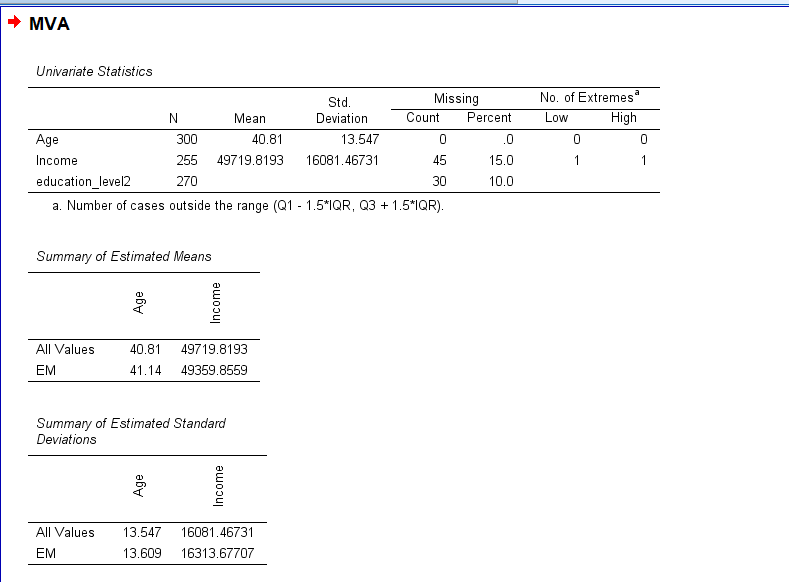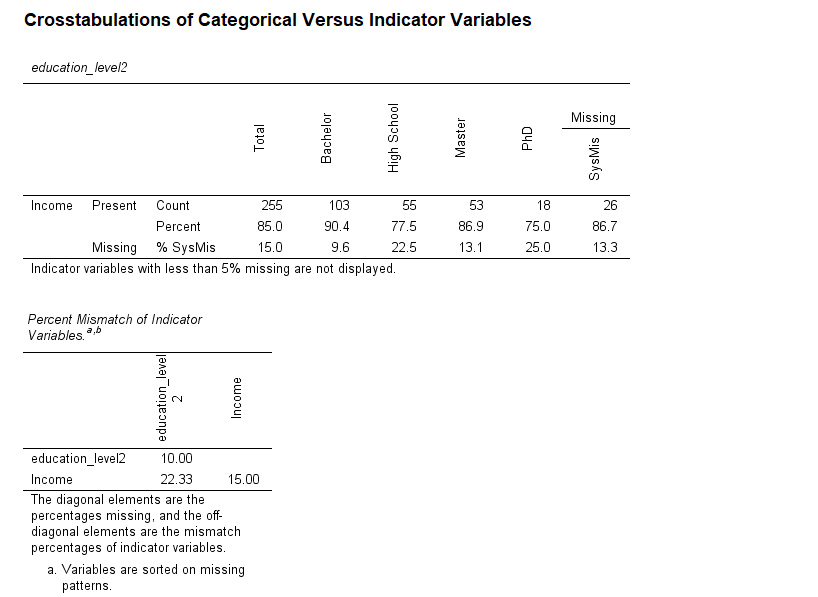Missing Not at Random in SPSS
Discover Missing Not at Random (MNAR) in SPSS! Learn how to perform, understand SPSS output, and report results in APA style. Check out this simple, easy-to-follow guide below for a quick read!
Struggling with MNAR in SPSS? We’re here to help. We offer comprehensive assistance to students, covering assignments, dissertations, research, and more. Request Quote Now!
1. Introduction
Dealing with missing data is a critical challenge in statistical analysis, and understanding the type of missingness mechanism is essential for selecting appropriate imputation strategies. While Missing Completely at Random (MCAR) and Missing at Random (MAR) are often discussed, Missing Not at Random (MNAR) represents the most complex and problematic type of missingness. This guide explores what MNAR means, how it differs from other mechanisms, and how to approach it in SPSS, despite its limitations in formally testing MNAR.
2. What is MNAR?
Missing Not at Random (MNAR) occurs when the probability of missing data is related to the unobserved (missing) values themselves. In other words, the reason a value is missing is systematically related to the value that should have been observed.
For example, individuals with higher income may be more likely to skip reporting their income. Since the missingness depends on the missing value itself, the mechanism violates the assumptions of both MCAR and MAR.
MNAR is particularly concerning because it can introduce serious bias into your analyses, and most standard imputation methods—such as mean imputation or multiple imputation—may not correct for this bias.
3. What Are the Differences Between MCAR, MAR, and MNAR?
Understanding the differences between missing data mechanisms is crucial for choosing the right analysis method:
MCAR (Missing Completely at Random): Missingness is unrelated to any variable. Safe to ignore or delete missing cases.
MAR (Missing at Random): Missingness is related to observed variables but not to the missing values themselves. Requires imputation methods like MICE.
MNAR (Missing Not at Random): Missingness depends on the unobserved value itself (e.g., people with higher incomes are more likely not to report it). Requires modeling the missingness process or sensitivity analysis.
| Assumption | Missingness Depends On | Can Be Tested in SPSS? | Suitable Techniques |
|---|---|---|---|
| MCAR | Nothing (completely random) | Yes (Little’s MCAR test) | Listwise deletion, EM |
| MAR | Other observed variables | Indirectly (via t-tests, chi-square) | MICE, multiple imputation |
| MNAR | The variable’s own (missing) value | No (not directly testable) | Sensitivity analysis, data modeling |
In practice, distinguishing between MAR and MNAR can be very difficult, and researchers often assume MAR due to the feasibility of analysis.
4. Why Is MNAR Important in Data Imputation?
If your data are MNAR, standard imputation techniques may lead to biased estimates because they assume that missingness can be predicted from other observed data. When this assumption is violated, imputing values without modeling the missingness process leads to unreliable inferences.
Recognizing the presence of MNAR guides researchers toward using advanced strategies such as:
Model-based approaches (e.g., selection models or pattern-mixture models)
Sensitivity analyses
Collecting auxiliary data or follow-up information
Although SPSS does not directly support these advanced models, analysts can use exploratory techniques to consider whether MNAR may be present.
5. Can MNAR Be Tested in SPSS?
Unfortunately, MNAR cannot be tested directly in SPSS because it involves unobserved data. However, you can use indirect evidence to evaluate whether MNAR is plausible. For instance:
If the pattern of missingness shows that high values (or low values) are systematically absent, MNAR may be suspected.
If tests for MAR suggest that missingness is not explained by observed data, MNAR may be more likely.
If the proportion of missing data increases with sensitive variables (like income, weight, or mental health scores), MNAR should be considered.
SPSS can support these explorations using custom indicators and descriptive comparisons.
6. Example for MNAR in SPSS
Consider a dataset where Income is missing for 15% of the cases. If individuals with higher income are systematically less likely to report it, and this cannot be explained by any observed variable like Age or Education, the missingness in Income is likely MNAR. In this case, MAR-based methods (such as multiple imputation) may underestimate true income levels.
Step by Step: Running MNAR in SPSS Statistics
Let’s embark on a step-by-step guide on performing the MNAR using SPSS
Although SPSS cannot test MNAR directly, here’s how you can explore the plausibility of MNAR using indirect methods:
Option 1: Use Missing Value Analysis Procedure
Go to
Analyze→Missing Value Analysis.Add variables such as Income, Age, and Education Level.
Under “Descriptives,” select “Univariate Statistics.”
Run the analysis and review the output.
If t-tests show no relationship between missingness and observed variables, and missingness appears selective (e.g., only high-income responses missing), MNAR might be suspected.
Option 2: Create and Compare Missingness Indicators
Create a binary missingness indicator:
Go to
Transform→Compute VariableFor example:
income_miss_ind = MISSING(Income)
Run t-tests or chi-square tests to compare:
Income missingness by Age (t-test)
Income missingness by Education Level (chi-square)
If no significant associations are found, yet missingness follows a non-random pattern, you may suspect MNAR.
Note: Conducting Nonlinear Regression in SPSS provides a robust foundation for understanding the key features of your data. Always ensure that you consult the documentation corresponding to your SPSS version, as steps might slightly differ based on the software version in use.
This guide is tailored for SPSS version 25, and for any variations, it’s recommended to refer to the software’s documentation for accurate and updated instructions.
8. SPSS Output for MVA
9. SPSS Output for Missing Not at Random
SPSS output relevant for evaluating MNAR includes:
Univariate statistics for missingness patterns
Separate variance t-tests for differences in observed variables by missingness
Missing data patterns to check whether specific types of cases tend to have missing data
Crosstabs showing the distribution of categorical variables across missing vs. observed groups
Although these outputs do not confirm MNAR, they help assess whether observed variables explain missingness. If not, MNAR is more plausible.
10. How to Interpret Missing Not at Random in SPSS
If missingness cannot be explained by observed data, and theoretical or domain-specific knowledge suggests the missing values are systematically different, MNAR may be the most appropriate assumption.
In that case:
Avoid relying solely on multiple imputation or EM
Consider using pattern-mixture models or sensitivity analysis
If possible, consult Bayesian methods or collect follow-up data to reduce MNAR uncertainty
Because SPSS lacks direct support for MNAR modeling, you may need to transition to R, SAS, or Mplus for more advanced solutions.
Get Help For Your SPSS Analysis
Embark on a seamless research journey with SPSSAnalysis.com, where our dedicated team provides expert data analysis assistance for students, academicians, and individuals. We ensure your research is elevated with precision. Explore our pages;
- SPSS Help by Subjects Area: Psychology, Sociology, Nursing, Education, Medical, Healthcare, Epidemiology, Marketing
- Dissertation Methodology Help
- Dissertation Data Analysis Help
- Dissertation Results Help
- Pay Someone to Do My Data Analysis
- Hire a Statistician for Dissertation
- Statistics Help for DNP Dissertation
- Pay Someone to Do My Dissertation Statistics
Connect with us at SPSSAnalysis.com to empower your research endeavors and achieve impactful data analysis results. Get a FREE Quote Today!







